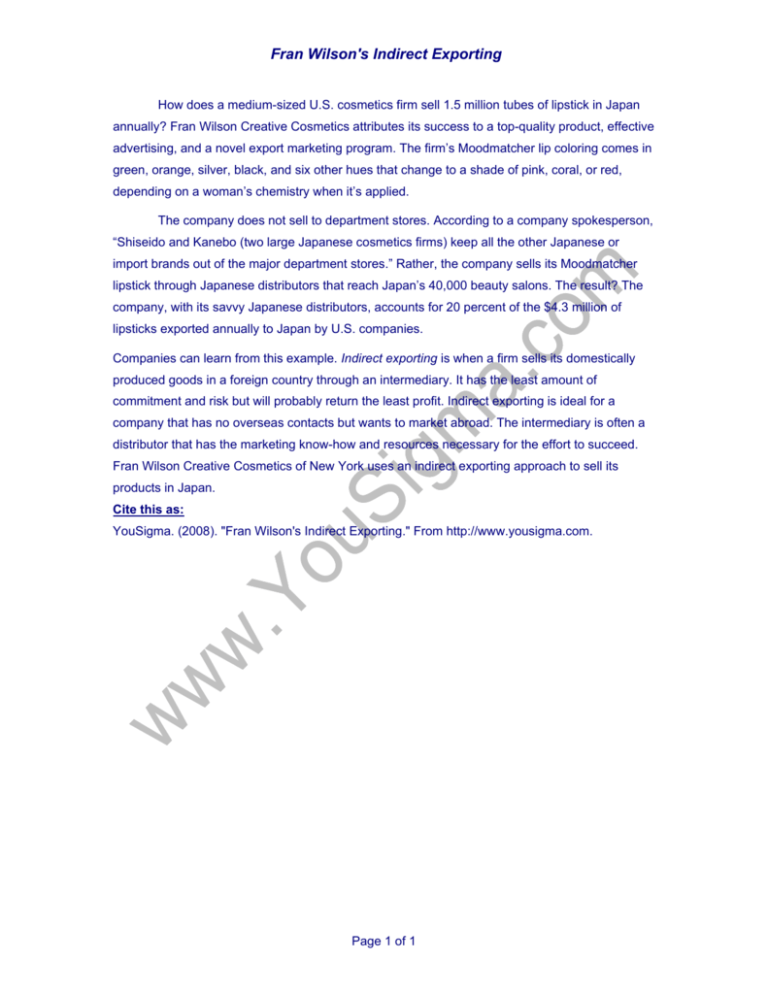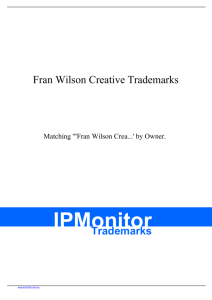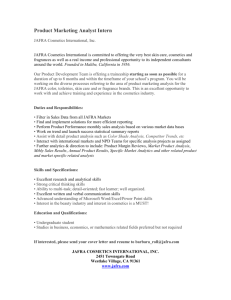Fran Wilson's Indirect Exporting
advertisement

Fran Wilson's Indirect Exporting How does a medium-sized U.S. cosmetics firm sell 1.5 million tubes of lipstick in Japan annually? Fran Wilson Creative Cosmetics attributes its success to a top-quality product, effective advertising, and a novel export marketing program. The firm’s Moodmatcher lip coloring comes in green, orange, silver, black, and six other hues that change to a shade of pink, coral, or red, depending on a woman’s chemistry when it’s applied. The company does not sell to department stores. According to a company spokesperson, “Shiseido and Kanebo (two large Japanese cosmetics firms) keep all the other Japanese or import brands out of the major department stores.” Rather, the company sells its Moodmatcher lipstick through Japanese distributors that reach Japan’s 40,000 beauty salons. The result? The company, with its savvy Japanese distributors, accounts for 20 percent of the $4.3 million of lipsticks exported annually to Japan by U.S. companies. Companies can learn from this example. Indirect exporting is when a firm sells its domestically produced goods in a foreign country through an intermediary. It has the least amount of commitment and risk but will probably return the least profit. Indirect exporting is ideal for a company that has no overseas contacts but wants to market abroad. The intermediary is often a distributor that has the marketing know-how and resources necessary for the effort to succeed. Fran Wilson Creative Cosmetics of New York uses an indirect exporting approach to sell its products in Japan. Cite this as: YouSigma. (2008). "Fran Wilson's Indirect Exporting." From http://www.yousigma.com. Page 1 of 1









